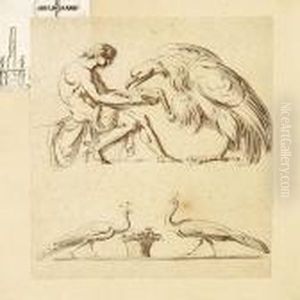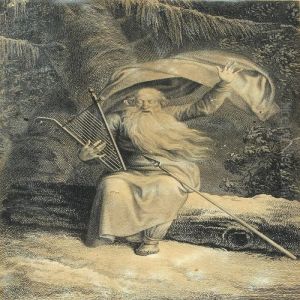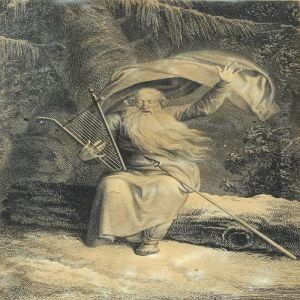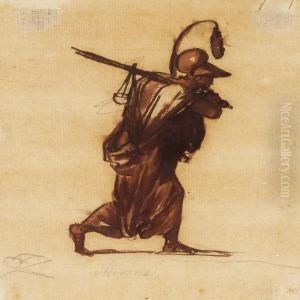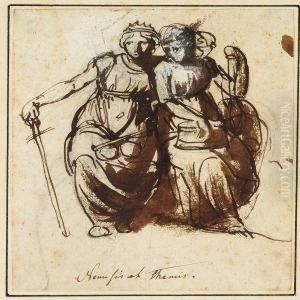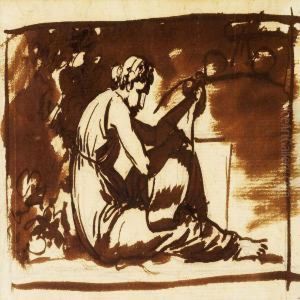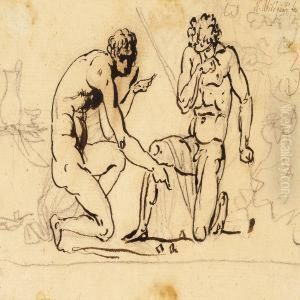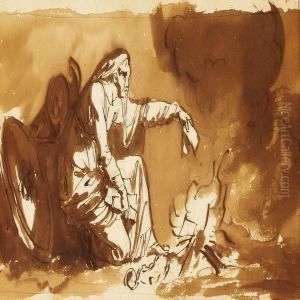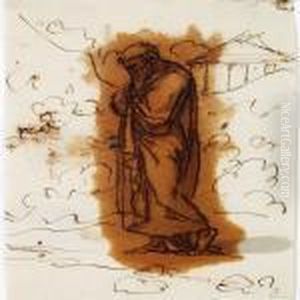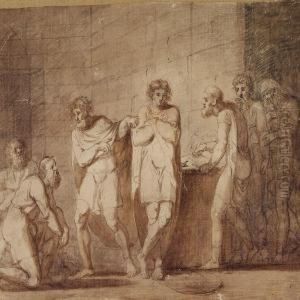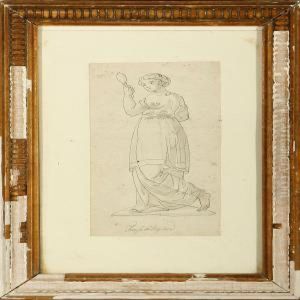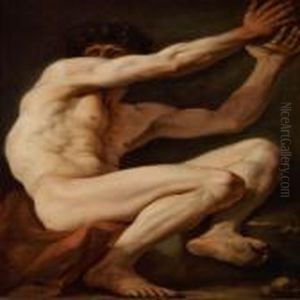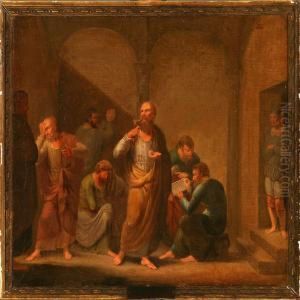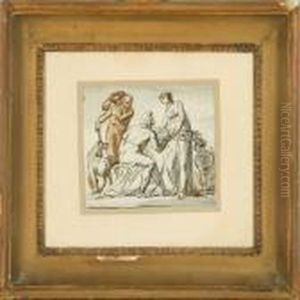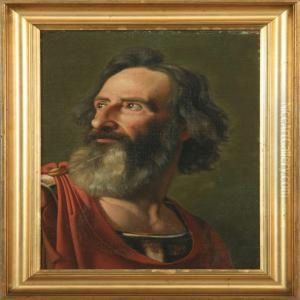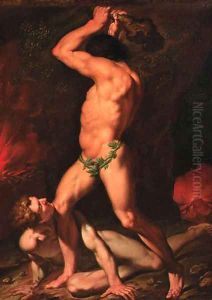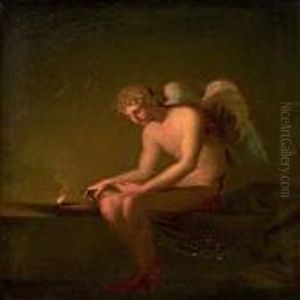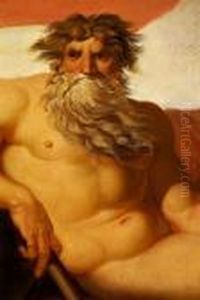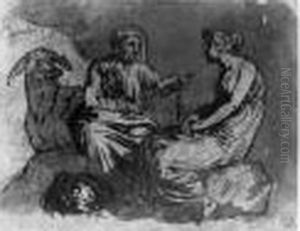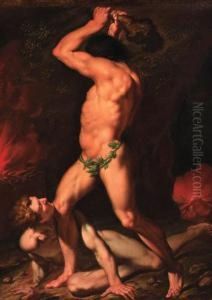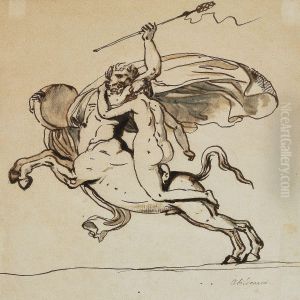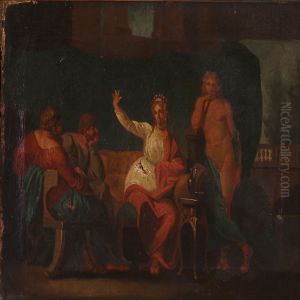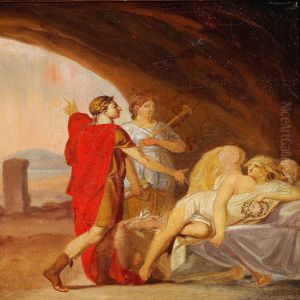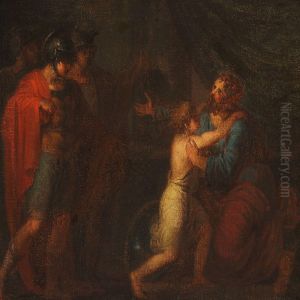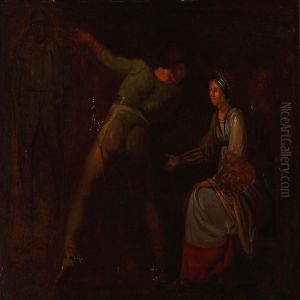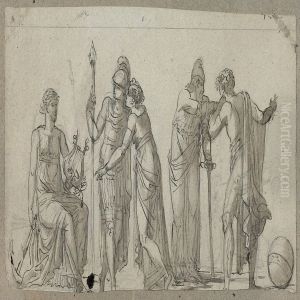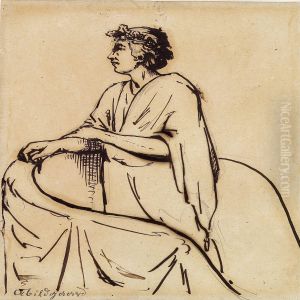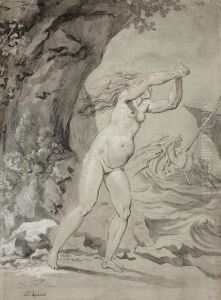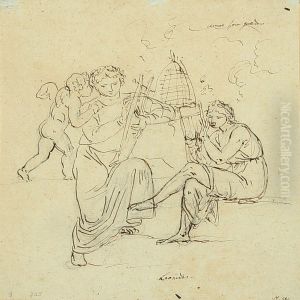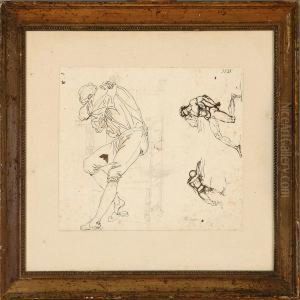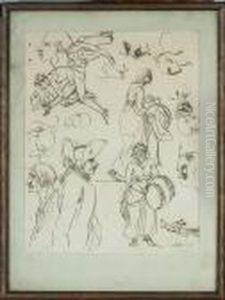Nicolas-Abraham Abilgaard Paintings
Nicolas-Abraham Abildgaard was a prominent Danish neoclassical and history painter, who also made notable contributions as an architect, antiquary, and professor. Born on September 11, 1743, in Copenhagen, Denmark, he was the son of Søren Abildgaard, an eminent naturalist and antiquary. His early interest in art was fostered by his father's intellectual milieu, and he went on to study at the Royal Danish Academy of Fine Arts, where he won a series of awards that allowed him to travel and study throughout Europe.
Abildgaard's travels took him to Rome, where he was influenced by classical art and the works of Raphael and other Renaissance masters. He was also influenced by the dramatic chiaroscuro of the Baroque artists and began to develop his own style that combined classical motifs with a powerful use of color and dramatic lighting. He became a central figure in the development of Danish neoclassicism during the late 18th century.
Upon returning to Denmark, Abildgaard was appointed as a professor at the Royal Danish Academy in 1778 and later became its director. He was instrumental in shaping the education of the next generation of Danish artists, including the famous sculptor Bertel Thorvaldsen. As an artist, he was very productive and created numerous historical and mythological paintings, as well as designing interiors and creating decorations for royal palaces.
One of his most famous works is the painting 'The Wounded Philoctetes,' which reflects his mastery of emotional expression and classical themes. His historical paintings often contained a moral or political message, and he was deeply involved in the intellectual life of his time, participating in the cultural and political debates of the age.
Abildgaard's work as an architect included designing buildings and interiors in a neoclassical style that complemented his artistic vision. He was also a keen antiquary, interested in Nordic mythology and history, which he incorporated into his works.
Nicolas-Abraham Abildgaard passed away on June 4, 1809, in Copenhagen. His legacy as a key figure in Danish art history is marked by his significant contributions to the neoclassical movement and the training of future artists. His works continue to be admired for their emotional depth, technical skill, and historical importance.
